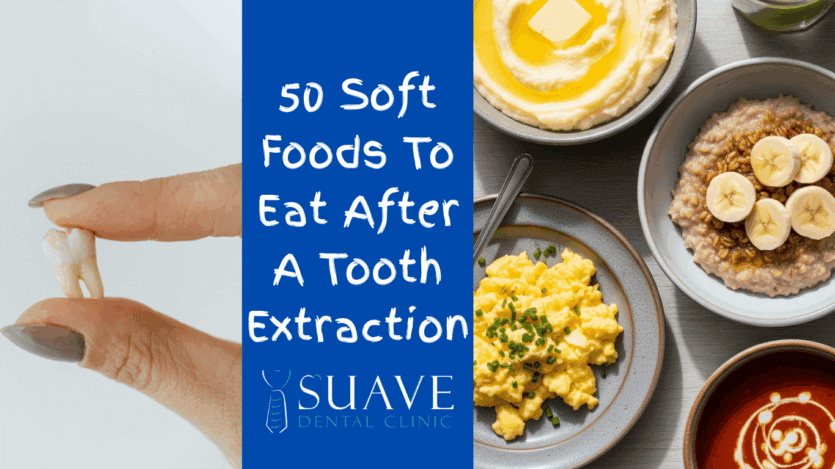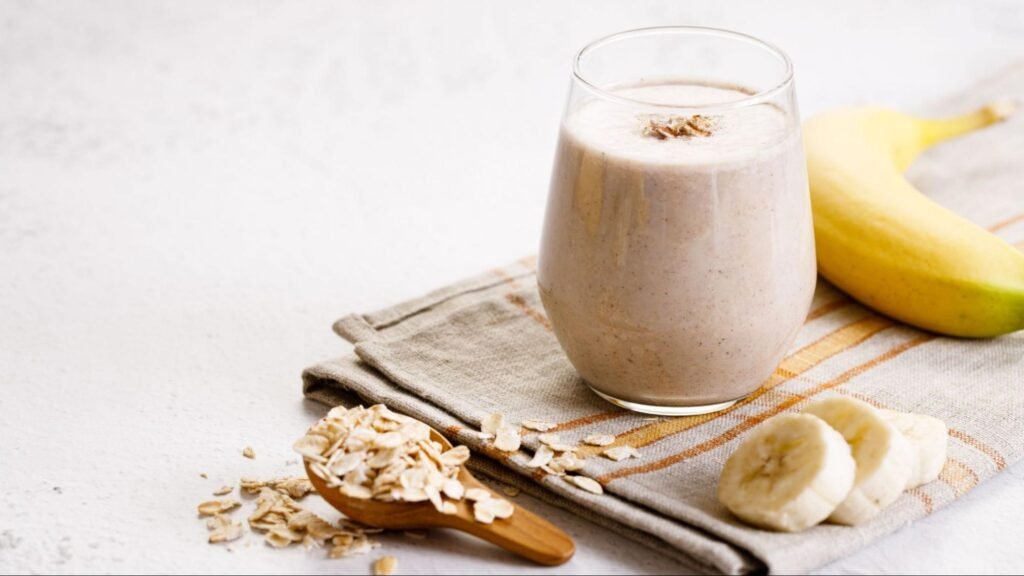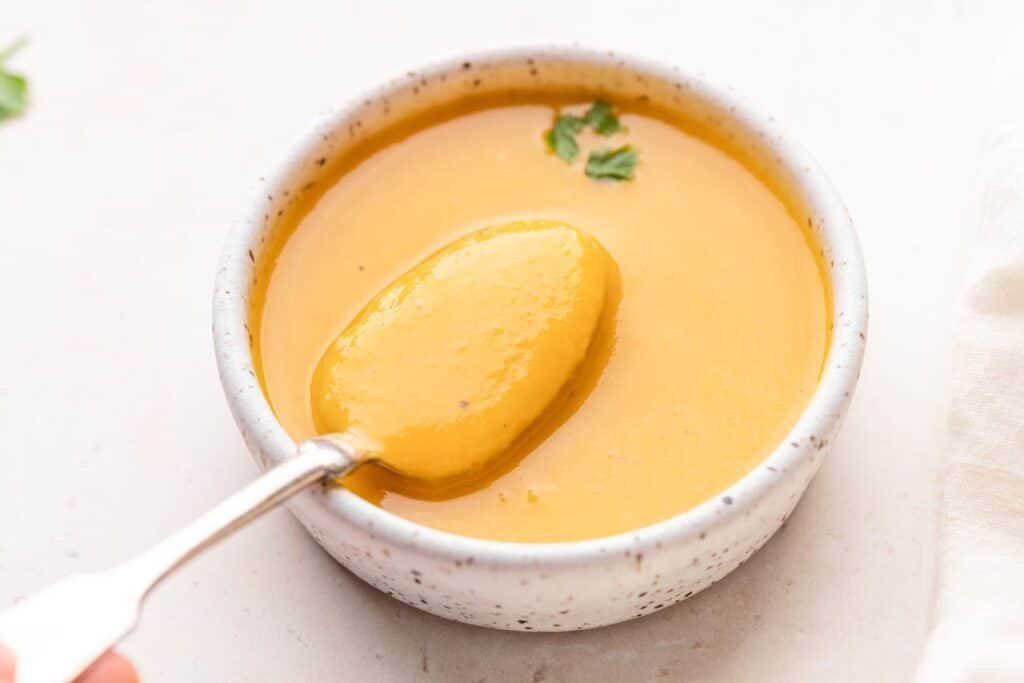
Table of Contents
Whether you have just had a tooth pulled or undergone a more complex dental surgery, there’s one universal truth: healing starts on your plate.
Your recovery isn’t only in your dentist’s hands, but it also depends on your daily choices. Eating soft, nutrient-rich foods is one of the best ways to accelerate healing, alleviate discomfort, and prevent complications after a tooth extraction procedure.
But don’t worry: recovery meals don’t have to be boring!
With a little creativity, you can enjoy comforting dishes that both heal and delight your taste buds.
This guide presents the top 50 Soft Foods to Eat After Tooth Extraction, including Turkish-inspired favorites and global soft food staples, designed to make your recovery time delicious.
Why do cold, soft foods matter after dental work?
After tooth extractions, gingivectomy, implants, grafts, or encountering a serious complication like sinus perforation, operculectomy, or gingival curettage, your mouth will be busy healing.
Chewing tough or crunchy foods can disturb healing tissues, dislodge the essential blood clot (dry socket!), or introduce bacteria. Instead, a Soft diet after tooth extraction, nutrient-rich foods will help you:
- Support tissue repair
- Reduce inflammation
- Avoid unnecessary pressure on your jaw
- Stay nourished and satisfied
Here is a list of The Best 50 Foods To Eat After a Tooth Extraction (and still enjoyable!) We have curated this list to help you build a recovery-friendly and satisfying soft-food diet.
Soft and Comforting Home-Style Healing Foods
- Mashed potatoes (or Turkish-style patates püresi)
- Apple sauce
- Greek yoghurt (Choose full-fat, low-sugar versions for a richer taste and better healing support)
- Cottage cheese
- Smoothies: “Just leave out the seeds and ice to keep it gentle on your mouth.”
- Pudding
- Oatmeal or warmed semolina porridge
- Scrambled eggs
- Cream of wheat
- Fruit purée
- Pasta ( very cooked, soft pasta after dental surgery)
Cold & Refreshing
- Jelly
- Ice cream (try dondurma, but let it melt a bit!)
- Sorbet
- Gelato (Ice cream is made with a higher proportion of cream to milk and contains egg yolks, which add to its richness, whereas gelato uses more milk than cream and has little to no egg yolks, meaning there is less fat content than in ice cream)
- Frozen yogurt
- Smoothie bowls
- Chia pudding
- Blended fruit popsicles
- Milkshakes ( Be aware to use a spoon, not a straw!)
Protein Packed
- Silken tofu
- Soft scrambled or poached eggs
- Hummus
- Nut butters (smooth only)
- Soft cheeses like labneh or ricotta
- Crab or shrimp bisque
- Ground chicken or turkey (very finely chopped)
- Soft lentils
- Tuna or egg salad (Avoid crunchy foods like raw celery—they’re too tough for healing gums)
- Mashed beans or refried beans
Turkish-Inspired Healing Favorites
- Soft-cooked vegetables like zucchini, eggplant, and carrots
- Mashed sweet potatoes
- Creamy lentil soup (mercimek çorbası)
- Soft rice or rice pudding (sütlaç)
- Mashed pumpkin or squash
- Steamed fish like sea bass (levrek) or bream (çupra)
- Soft polenta or grits
- Turkish Kumpir (Mashed potato filled with cheese and your favorite soft side dishes)
- Soft-cooked bulgur wheat
Sweet & Easy Additions
- Tapioca pudding
- Custard
- Banana
- Canned fruit (in juice, not syrup)
- Mangos or papaya (very ripe)
- Cheesecake (no crust)
- Mousse (chocolate or fruit-based)
- Ice cream cake (if soft and thawed slightly)
- Matzo ball or yumurtalı ekmek (Turkish-style eggy bread)
- Soft muffins (moist and crustless)
- Crème Brule
How to Prepare Soft Foods for Maximum Comfort?
- Blending & Pureeing: Turn cooked food into a soft version—vegetables, beans, meats.
- Steaming & Boiling: Soften produce and proteins while preserving nutrients.
- Mashing: Go old-school with a fork or potato masher.
- Slow Cooking & Braising: Ideal for meats and grains—think pulled chicken, soft stews.
- Cooking in Broth: Adds flavour and moisture, essential for a soothing texture.
Tips for Eating After Dental Procedures:
When it comes to healing, how often you eat matters just as much as what you eat—small, frequent meals keep your energy steady and your digestion gentle. Here are some Tips for Eating After Dental Procedures:
- Skip hot foods: Let everything cool to lukewarm before eating to avoid irritating the site.
- Never use straws: Sucking can dislodge your healing blood clot—stick to spoons and sipping.
- Eat small portions, often: Don’t overload your mouth or digestion. Eat every 2–3 hours.
- Stay hydrated: Water is your best friend—just sip it gently.
- Avoid acidic, spicy, crunchy, sticky, or carbonated foods: No orange juice, tomato sauce, or Turkish pepper paste for now!
- Avoid smoking: Delay for at least 48–72 hours—ideally longer—to protect healing gums.
- Don’t skip dental follow-ups: Especially important for medical tourists. Try to plan for them before leaving.
What Food Should You Avoid After Tooth Extraction
- Crunchy foods: chips, popcorn, nuts
- Seeds: strawberries, sesame, pomegranate
- Spicy dishes: they can burn!
- Hot beverages: tea and coffee should be warm, not hot
- Acidic items: citrus, tomatoes, vinegar
- Alcohol: slows healing and can interfere with medication
- Carbonated drinks: The fizz is too aggressive for the wound
- Chewy meats or breads
- Sticky desserts: Turkish delight (lokum) will have to wait!
Eating Soft, delicious meals after dental surgery in Turkey:
Staying in Turkey for your procedure? And can’t decide on your first night after tooth extraction, what to eat?
Great news—you’re surrounded by recovery-friendly foods:
- Mercimek çorbası (red lentil soup): smooth, warm, and protein-rich
- Sütlaç (rice pudding): soft, sweet, and nourishing
- Ezogelin soup (if well-blended): lentils, rice, and veggies
- Menemen (scrambled eggs with tomato): let it cool, skip the bread
- Püreli köfte (mashed potatoes with soft meatballs): great if the meat is tenderized
When Can I Start Eating Solid Food After Tooth Extraction?
The days after tooth removal are important for proper healing and avoiding complications. For the first 3 to 5 days, it is better to stick to soft foods that can’t disturb the surgical site. Most people can gradually reintroduce solid foods after about a week, but every recovery is different, so be sure to follow your dentist’s guidance based on how well your mouth is healing.
Why No Dairy After Dental Implant Surgery Or Tooth Extraction?
If you have searched online after your tooth extraction, you may have read some advice warning against dairy products. This outdated advice is everywhere—from AI-generated content to dentist blogs—but it is time to reveal the truth.
The idea that dairy is harmful after dental surgery comes from an old concern about unpasteurized milk transmitting diseases like tuberculosis—something that is no longer found in today’s food safety standards, so we can say that:
- There is no evidence that taking dairy after dental surgery leads to bacterial overgrowth in the mouth. While dairy can affect gut bacteria in people with lactose intolerance, this isn’t related to the healing of your extraction wound.
- Although milk contains a clot-regulating enzyme called plasminogen, it is found in so small amounts that it has no significant impact compared to what is already found in your blood. So your healing blood clot is not at risk from milk.
- It is true that milk can reduce absorption of some antibiotics (like tetracyclines), but the antibiotics that are most commonly prescribed after dental work, such as amoxicillin and clindamycin, do not interact with dairy.
As always, we recommend that if you are unsure or have specific health conditions, check with your dentist or surgeon to tailor your own diet.
Eating Right = Healing Right!
Navigating meals after dental surgery can be challenging, but with a touch of creativity, you can enjoy delicious and soothing dishes that aid in recovery.
Here are some soft, cozy meal ideas for breakfast, lunch, and dinner, inspired by Turkish flavours and international favourites, complete with recipe names, images, and links to guide you.
1) Breakfast Idea: Creamy Banana Oatmeal Smoothie
A creamy, nutritious smoothie that feels like a hug in a glass. Bananas give you potassium and fibre, while oats keep you satisfied with gentle, slow-release energy. Perfect for a soft start to your day.
Ingredients:
- 1 ripe banana
- 1/2 cup of rolled oats
- 1 cup of milk or a plant-based alternative to milk
- 1 tablespoon of honey (optional)

Preparation:
- Adjust the thickness by adding more milk if needed.
- Blend banana, oats, and milk until silky smooth.
- Add honey for a touch of sweetness.
2) Lunch Idea: Pureed Butternut Squash Soup
A bowl of sunshine! This creamy butternut squash soup is rich in vitamins A and C, supports your immune system, and is wonderfully easy to eat.
Ingredients:
- 1 small butternut squash, peeled and diced
- 4 cups of vegetable broth
- 1/2 cup of cream (optional for extra richness)
- Salt and pepper to taste

Preparation:
- Simmer the diced squash in broth until tender (about 20 minutes).
- Blend until smooth and creamy.
- Add cream, salt, and pepper as desired.
3) Dinner Idea: Soft Salmon Cakes with Lemon Dill Sauce
Tender, flaky salmon cakes packed with omega-3s — gentle on your teeth and full of flavour. Paired with a refreshing lemon dill sauce, this dish feels gourmet yet soft enough for your post-surgery diet.
Ingredients:
- Flaked cooked salmon
- Mashed potatoes (for softness and binding)
- 1 egg
- Fresh dill, lemon juice, salt, and pepper for seasoning

Preparation:
- Serve with a creamy lemon dill sauce on the side.
- Gently mix flaked salmon with mashed potatoes, egg, and seasonings.
- Shape into soft patties.
- Lightly pan-fry until golden and heated through.
Here are the Dos and Don’ts Tips After Tooth Extraction:
Do This After Dental Surgery
- Follow your surgeon’s instructions, not your instincts. Their instructions are your recovery roadmap.
- Rest like royalty — prop your head up, relax, and let your body heal.
- Apply an Ice Pack on the swelling area — 15 minutes on, 15 minutes off to avoid swelling.
- Take medications on time — don’t wait for the pain to wake you up.
- Stick to soft bites — think mashed, smooth, and gentle.
- Rinse smartly — rinse with salt water after 24 hours, especially after meals.
- Feed your healing — load up on vitamins A & C from real foods or supplements.
Don’t Do This After Dental Surgery
- Don’t act like a dentist — skip any “home hacks” and follow medical advice.
- No gym — skip intense workouts for a few days.
- Say no to any heat — hot drinks or food + wound = burn risk.
- Crunch = Ouch — avoid hard, crunchy foods near the surgical site for weeks.
- Skip the toothbrush (at first) — no brushing or flossing near the site until cleared.
- No smoking — at least 24 hours, but preferably forever.
- Skip the sip — no alcohol for 24 hours or while on medications.
Healing after dental surgery doesn’t mean sacrificing flavour or enjoyment. With the right soft foods — many inspired by Turkish comfort classics — you can nourish your body, protect your smile, and even discover new favourite dishes along the way. Whether you’re recovering at home or visiting Turkey for dental care, remember: “Every spoonful can bring you one step closer to feeling your best. Happy healing — and bon appétit!”.
For more information, contact our clinic for a personalized recovery plan and local dining guide!
Medically Reviewe


